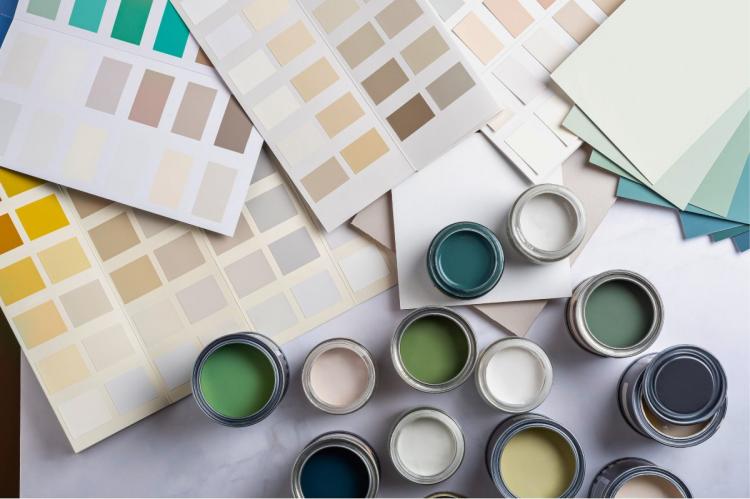First Steps in Painting
Painting can be fun. It can also create a heartbreak. Imagine if you mess up a wall. The trick not to have any mishaps is preparation.
Getting started on a new project is always the hardest part. One major reason for that, especially in the case of painting your house, is the knowledge barrier. There's just so much to know to get the job done right. Read on and flatten that hurdle between you and your house's brand new look.
Color and Type Selection
Selecting the color and type of paint is number one on the list. That's a little harder than it sounds. You'll need to research whether you want oil or latex-based paint. Oil is generally preferred outside for its long lasting quality. Latex is often chosen indoors since it makes for easy clean up of stains. But there's no iron clad rule. For example, an interior room that gets lots of sunshine all day long will generally do better with an oil or alkyd-based paint. Choosing a color is easier - if one person makes the choice. Apart from possible disagreements over preference, there is still the daunting task of selecting among a hundred different shades. Many of them blend into one another and it can be hard to visualize the final result. Starting with a color palette on the computer is ok, but graduate quickly to a booklet of samples. The colors on a computer screen will look very different on a wall.
Prep Work
Allocate enough time to do the proper prep work. Painting, whether exterior or interior, is 80% preparation. Though you can paint large areas with a roller or sprayer quickly, there are always a hundred surfaces you don't want painted. That means masking, laying down plastic or tarp, and other time-consuming preparation tasks. There's another type of preparation work that may take a little or a lot of time, depending on your surface. An exterior wall or trim can become cracked, oxidized and suffer other effects. Interiors can require patching of dents or holes, scrapes and similar defects. Going to all the expense and trouble of painting your house makes the extra work to do the prep worthwhile. That is, if you want the final result to look as close to new as possible.
Materials
Get your materials together. Painting looks simple. But professionals earn their money in part because they know what the job takes and they have the tools to do it. Paint and paint brushes or rollers are only two of the most obvious things you'll need. But prep work may require sanding blocks and sandpaper, wood putty, spatulas and more. Painting requires either a complete spray kit or pans with stirring sticks. Thinner for oil-based paints is a must to remove 'accidents' and get paint to the desired consistency. But, once you've got the basics ready to go - and the initial work out of the way - the job can go quickly and smoothly. Not only do you save money by doing it yourself, but you get the satisfaction of seeing it done well, knowing you did it. Just flatten that knowledge hurdle and you'll be jumping for joy.
